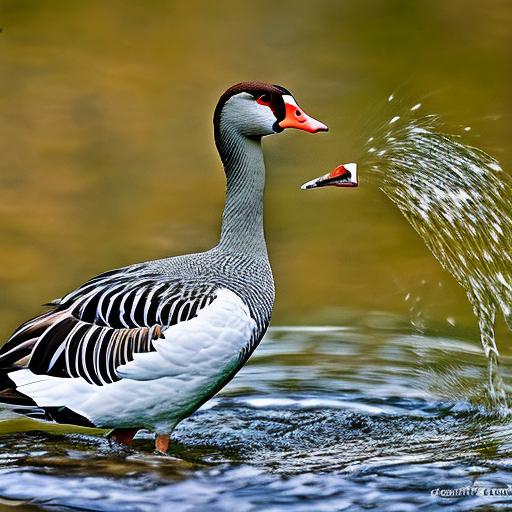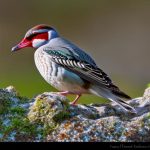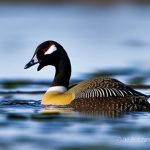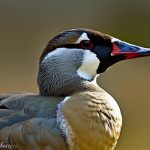Geese invading ponds and causing damage is a common problem faced by many pond owners. These birds are attracted to ponds because they provide a source of food and water, as well as a safe place to nest. The damage caused by geese includes trampled vegetation, feces that can contaminate the water, and aggressive behavior towards humans and other animals. Fortunately, there are several methods that can be used to deter geese from ponds and protect the area.
Key Takeaways
- Geese are attracted to open water and grassy areas for feeding and nesting.
- Fencing around the pond can prevent geese from accessing the area.
- Decoys and scare tactics can be effective in deterring geese, but need to be rotated frequently.
- Planting tall grasses and shrubs around the pond can create a natural barrier for geese.
- Motion-activated sprinklers and reflective tape or balloons can startle geese and discourage them from returning.
Understanding the behavior of geese
To effectively deter geese from ponds, it is important to understand their behavior. Geese are attracted to ponds because they provide a reliable source of food and water. They feed on aquatic plants, grass, and insects found in and around the pond. Additionally, geese are social animals that prefer to nest in areas with open water and nearby vegetation for cover.
Geese are also territorial creatures and will defend their nesting sites aggressively. They will often chase away other birds or animals that come too close to their nests. This territorial behavior can be problematic for pond owners, as geese may become aggressive towards humans or other animals that approach the pond.
Installing a fence around the pond
One effective method of deterring geese from ponds is to install a fence around the perimeter of the pond area. A fence acts as a physical barrier that prevents geese from entering the pond area. It is important to choose a fence that is tall enough to deter geese from attempting to fly over it.
There are several types of fences that can be used to deter geese. One option is a chain-link fence, which is durable and provides a clear visual barrier for the geese. Another option is an electric fence, which delivers a mild electric shock when touched, deterring geese from attempting to cross it. Finally, a plastic mesh fence can also be effective in deterring geese, as it is difficult for them to navigate through the small openings.
Using decoys and scare tactics
Another method of deterring geese from ponds is to use decoys and scare tactics. Decoys, such as plastic or wooden replicas of geese, can be placed around the pond to create the illusion of a larger flock. This can deter geese from landing in the area, as they may perceive it as already occupied.
Scare tactics can also be effective in deterring geese. Loud noises, such as clapping or banging pots and pans together, can startle geese and cause them to fly away. Flashing lights, such as strobe lights or reflective tape, can also be effective in scaring geese away. These scare tactics should be used consistently to maintain their effectiveness.
Creating a natural barrier with plants
Plants can be used to create a natural barrier around the pond, deterring geese from entering the area. Tall grasses and shrubs can be planted around the perimeter of the pond to create a visual barrier that geese are less likely to attempt to cross. Additionally, plants with thorny or prickly foliage can deter geese from landing in the area.
Some plants that are effective in deterring geese include rose bushes, holly bushes, and cacti. These plants have thorns or prickly leaves that make it uncomfortable for geese to land or walk through. It is important to choose plants that are native to the area and suitable for the pond environment.
Installing motion-activated sprinklers
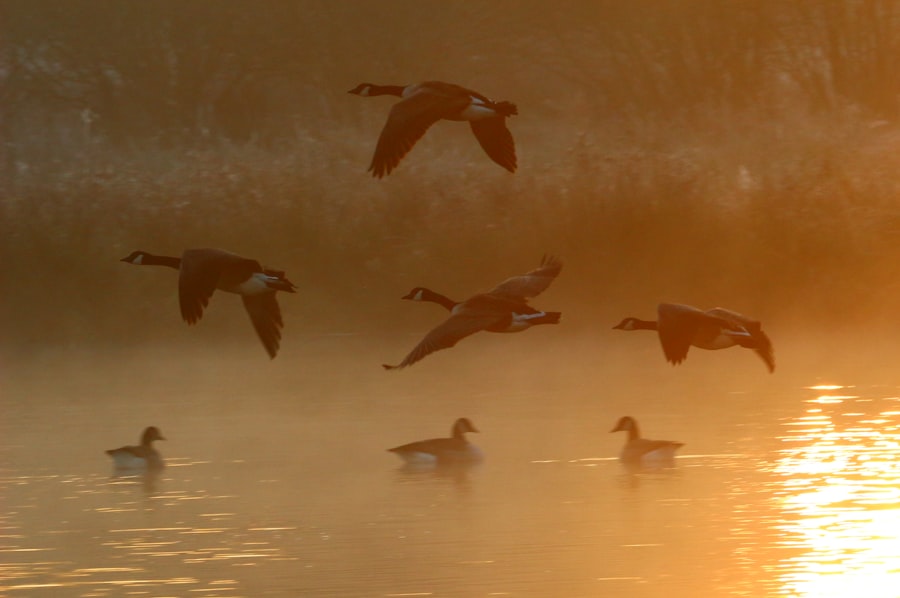
Motion-activated sprinklers can be an effective method of deterring geese from ponds. These sprinklers are equipped with motion sensors that detect when a goose approaches the pond area. When triggered, the sprinklers release a burst of water, scaring the geese away.
The benefits of using motion-activated sprinklers are twofold. Firstly, they provide an immediate and effective deterrent to geese, as the sudden burst of water startles them and encourages them to leave the area. Secondly, they are a low-maintenance option, as they only activate when geese are present, conserving water and reducing the need for constant monitoring.
Using reflective tape or balloons
Reflective tape or balloons can be used to deter geese from ponds. These items create a visual deterrent for geese, as the reflective surface confuses and startles them. The movement of the tape or balloons in the wind also adds to their effectiveness.
To use this method, simply tie strips of reflective tape or balloons around the perimeter of the pond. The movement and reflection of these items will deter geese from landing in the area. It is important to regularly check and replace the tape or balloons as needed, as they may become less effective over time.
Covering the pond with netting
Netting can be used to cover the pond and prevent geese from entering the area. This method is particularly effective during nesting season when geese are more likely to attempt to enter the pond area.
There are different types of netting that can be used, including nylon or polypropylene netting. The netting should be securely fastened around the perimeter of the pond to prevent geese from accessing the water. It is important to regularly check and maintain the netting to ensure its effectiveness.
Removing food sources
Removing food sources can be an effective method of deterring geese from ponds. Geese are attracted to ponds because they provide a source of food, such as aquatic plants and grass. By removing these food sources, geese are less likely to be attracted to the area.
To remove food sources, regularly trim and maintain vegetation around the pond. This includes cutting grass short and removing any aquatic plants that may be growing in the water. Additionally, it is important to clean up any spilled birdseed or other food sources that may attract geese.
Creating a designated feeding area
Creating a designated feeding area can prevent geese from wandering around the pond in search of food. By providing a specific area for geese to feed, they are less likely to venture into the pond area.
To create a designated feeding area, choose a location away from the pond and provide food for the geese. This can be done by scattering birdseed or corn in the designated area. It is important to consistently provide food in this area to encourage geese to feed there instead of near the pond.
Seeking professional help if necessary
If all else fails, it may be necessary to seek professional help to deter geese from ponds. There are professionals who specialize in wildlife management and can provide advice and assistance in deterring geese.
These professionals may use methods such as habitat modification, harassment techniques, or even relocation of geese to effectively deter them from ponds. It is important to consult with a professional who has experience in dealing with geese and understands the local regulations regarding wildlife management.
In conclusion, there are several methods that can be used to deter geese from ponds and protect the area. These methods include installing a fence, using decoys and scare tactics, creating a natural barrier with plants, installing motion-activated sprinklers, using reflective tape or balloons, covering the pond with netting, removing food sources, creating a designated feeding area, and seeking professional help if necessary.
It is important for pond owners to try different methods until they find one that works for them. Geese can be persistent creatures, but with patience and persistence, it is possible to deter them from ponds and protect the area from damage.
If you’re looking for ways to keep geese out of your pond, you might also be interested in learning about the benefits of having a garden chicken coop. Not only can a garden chicken coop provide fresh eggs for your family, but it can also help deter geese from invading your pond. Check out this informative article on poultrywizard.com to discover how a garden chicken coop can be a practical solution for both egg production and keeping geese away from your pond.
FAQs
What are some common problems caused by geese in ponds?
Geese can cause a number of problems in ponds, including excessive algae growth, water pollution, and damage to pond vegetation.
What are some effective ways to keep geese out of a pond?
Some effective ways to keep geese out of a pond include installing fencing or netting, using decoys or scare tactics, and planting vegetation that geese find unappealing.
What types of fencing or netting are best for keeping geese out of a pond?
Fencing or netting that is at least 4 feet tall and has small mesh openings (less than 3 inches) is most effective at keeping geese out of a pond.
What are some examples of scare tactics that can be used to keep geese away from a pond?
Examples of scare tactics that can be used to keep geese away from a pond include loud noises, motion-activated sprinklers, and predator decoys.
What types of vegetation do geese find unappealing?
Geese tend to avoid vegetation that is prickly, thorny, or has a strong odor. Examples include cacti, holly bushes, and lavender.
Meet Walter, the feathered-friend fanatic of Florida! Nestled in the sunshine state, Walter struts through life with his feathered companions, clucking his way to happiness. With a coop that’s fancier than a five-star hotel, he’s the Don Juan of the chicken world. When he’s not teaching his hens to do the cha-cha, you’ll find him in a heated debate with his prized rooster, Sir Clucks-a-Lot. Walter’s poultry passion is no yolk; he’s the sunny-side-up guy you never knew you needed in your flock of friends!

